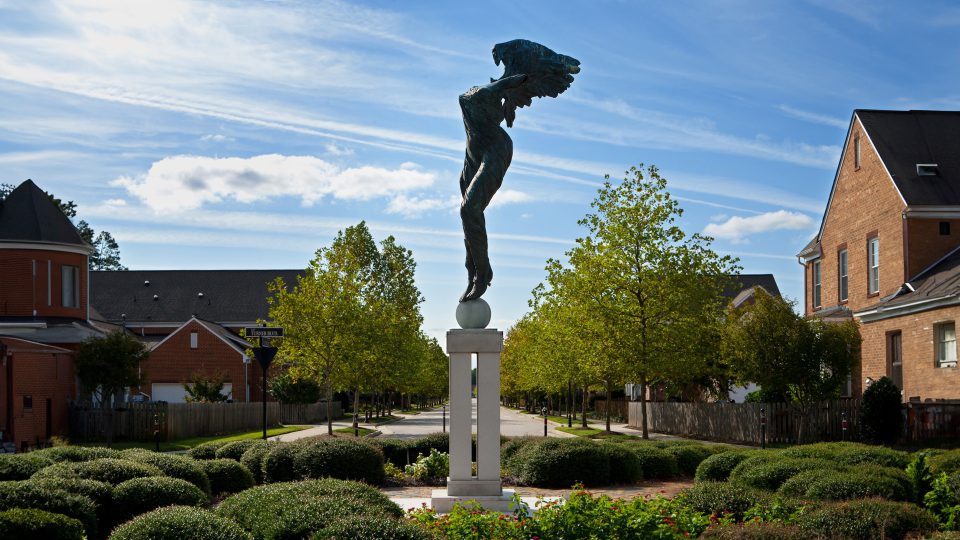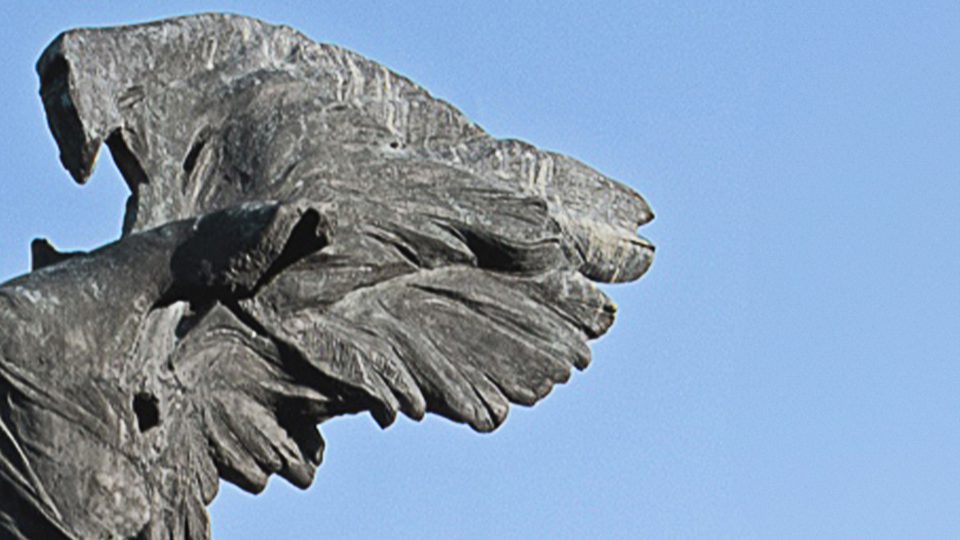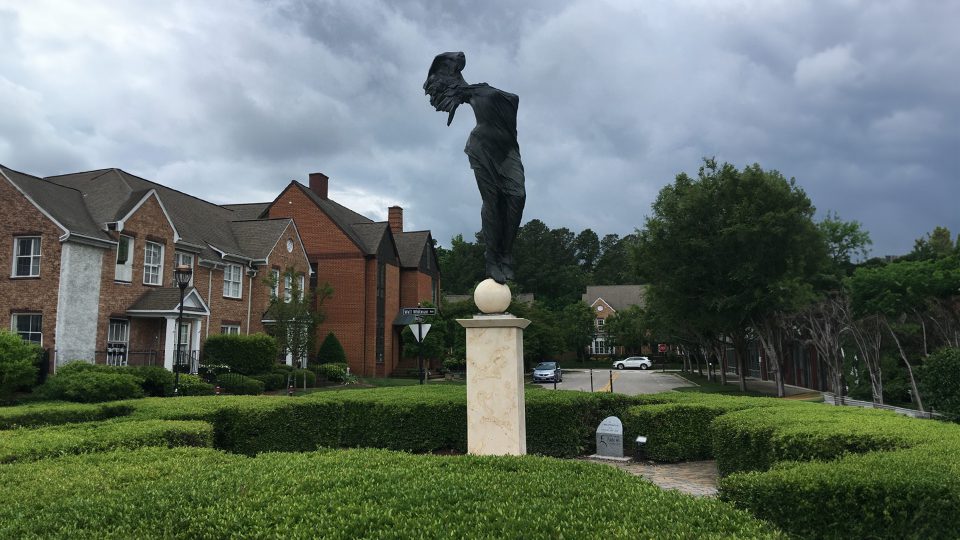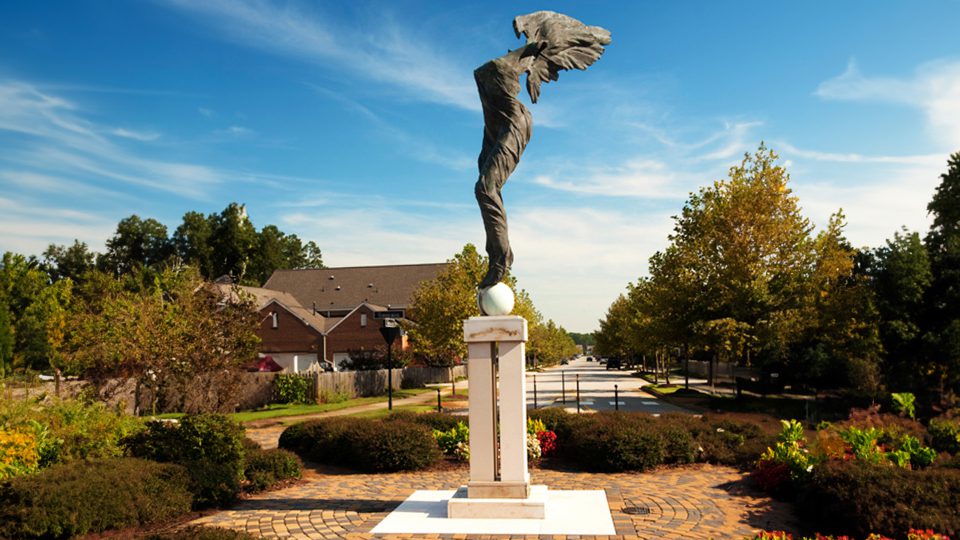Melpomene
ROMOLO DEL DEO
“Fragmented, twisted, broken, yet always heroic and beautiful despite their travail. The figures of Romolo Del Deo are rooted in classical mythology and romantic ideal. But in their compromised poses, they also indicate a contemporary, post-modern vantage point.” This is how an art expert, writing in Arts and Antiques, described the work of this American sculptor with Italian roots. The mythology in this piece refers to Melpomene, the muse of tragedy.
This piece illustrates the connections that artists make between their work and its context. Del Deo was inspired to choose Melpomene because the piece is set in a mixed-use development named Port Warwick, for the fictional city in Lie Down in Darkness, the tragic novel by Newport News native William Styron. Styron was involved in selecting the American authors and the characters in his books for whom Port Warwick’s streets are named.
The “compromised pose” described by the art critic is evident in Melpomene: The draping and figure are classical, but the head is missing, as is a wing. Del Deo explains that his sculptures “all start out as whole figures,” but “You’ve got to get rid of the extraneous elements, anything that gets in the way of the thing itself.”
ABOUT THE ARTIST
ROMOLO DEL DEO
Del Deo’s artistic education began in the studio of his father, the painter Salvatore Del Deo, and in a family rich in artists and writers. His passion for sculpture took him to Italy, to the Academy of Fine Art in Florence, to the atelier of Rino Giannini at the Academy of Fine Arts in Carrara and to Pietrasanta, where he learned the art and craft of bronze casting among artisans who have specialized in it since the days of Michelangelo.
After earning his undergraduate degree at Harvard College, Del Deo was invited to stay on as artist in residence, teaching and assisting sculptor Dimitri Hadzi.
The culmination of these experiences is an artistic vision that Del Deo’s statement describes as a “unique intersection of his training in the ancient culture and craftsmanship of Italy, the contemporary New York art world where he lives and workds, as well as that of his native Provincetown” in Massachusetts, where he spends much of his time.
Del Deo’s work is steeped in classical imagery, transformed by his own sensibility and by his quest, shared with the alchemists he invokes, to find, through the manipulation of basic elements like metals, the source, the truth, the touchstone of life.
Del Deo’s website: studioromolo.com
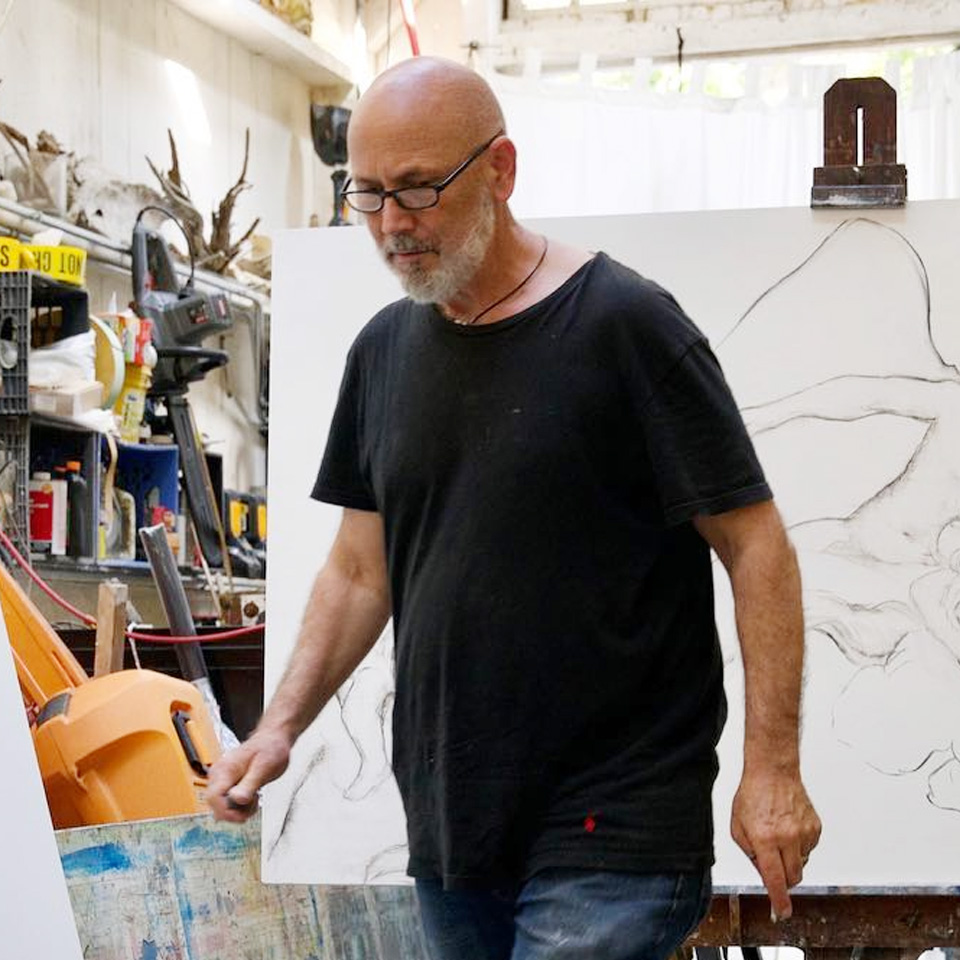
Artist: Romolo Del Deo
Details: Bronze with marble base, 20′ high. Made in Italy. Installed 2002.
Site: Intersection of Nat Turner Boulevard and Walt Whitman Avenue, Port Warwick
Audio Tour
Hear about the piece.
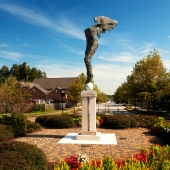
Romolo Del Deo chose as his subject Melpomene, the muse of tragedy, because of the connection between the development in which his sculpture is located and William Styron, the famous American novelist. Port Warwick is named for the fictional town in Styron’s classic Lie Down in Darkness, and the author was involved in planning the development, even helping choose the literary giants for which streets are named. Del Deo explains, “As soon as I turned my thoughts to creating a sculpture for a place whose very name resonated with the words of Styron, I realized that I should seek out his muse … Melpomene.” The 25-foot tall bronze sculpture captures the spirit of the muse who, in Greek mythology, inspired those who wrote tragic plays and played the lyre.
Born in Massachusetts, Del Deo studied sculpture at Harvard College, where he also served as artist in residence, and in Italy. An art expert described his work this way: “Fragmented, twisted, broken, yet always heroic and beautiful despite their travail, the figures of Romolo Del Deo are rooted in classical mythology and romantic ideal. But in their compromised poses, they also indicate a contemporary, post-modern vantage point.” Del Deo explains that, “They all start out as whole figures” but then “You’ve got to get rid of the extraneous elements, anything that gets in the way of the thing itself.”
